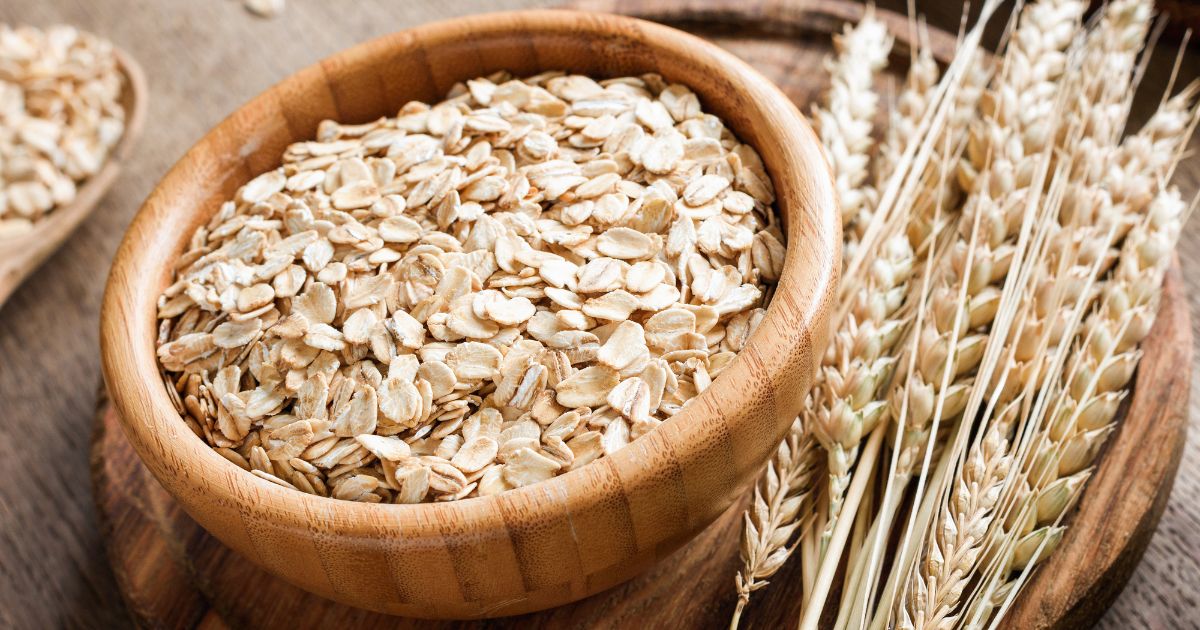The Chile Oat Market holds a significant place in the country’s agricultural landscape, providing a versatile and nutritious staple to consumers. Oats, known for their health benefits and adaptability, have become a staple in Chilean diets, showcasing the intersection of traditional agriculture and contemporary dietary preferences.
Historical Background:
Oats were introduced to Chile during the colonial period, and their cultivation gradually expanded over the years. Initially grown for animal feed, the recognition of oats as a valuable human food source gained momentum in the 20th century. Today, oats are cultivated across various regions of Chile, contributing to the country’s agricultural diversity.
Agricultural Practices and Varieties:
Chile’s diverse climate and topography enable the cultivation of various oat varieties. Regions such as the Central Valley and the southern parts of the country provide favorable conditions for oat cultivation. Locally adapted varieties, including naked oats, black oats, and white oats, thrive in different climatic zones, allowing farmers to tailor their cultivation practices to regional conditions.
Nutritional Value and Health Benefits:
Oats are renowned for their nutritional richness, providing essential nutrients such as fiber, vitamins, and minerals. The Chile Oat Market reflects a growing awareness of the health benefits associated with oats, including heart health, weight management, and improved digestion. Oat-based products have gained popularity as consumers seek wholesome and nutritious food options.
Market Dynamics and Consumption Patterns:
The Chile Oat Market has witnessed steady growth, fueled by changing consumer preferences and an increasing focus on healthy eating. Oat consumption has diversified beyond traditional forms, with products like oatmeal, oat milk, and oat-based snacks gaining prominence. The market caters to a broad demographic, including health-conscious consumers, athletes, and those with dietary restrictions.
Key Players and Industry Trends:
Local and international companies contribute to the vibrancy of the Chile Oat Market. Domestic brands, such as Quaker and Granix, coexist with smaller producers offering artisanal and organic oat products. Industry trends include the development of innovative oat-based products, such as oat-based beverages, cereals, and granola bars, reflecting a response to evolving consumer tastes and preferences.
Sustainable Agriculture Practices:
Chile’s oat producers increasingly emphasize sustainable and environmentally friendly cultivation practices. The implementation of precision agriculture, organic farming methods, and water conservation initiatives align with global sustainability goals. These practices not only contribute to the long-term health of the environment but also resonate with consumers seeking ethically produced food products.
Challenges and Opportunities:
The Chile Oat Market faces challenges related to climate variability, market competition, and the need for technological advancements. However, these challenges also present opportunities for innovation, research, and collaboration between farmers, scientists, and the food industry. The cultivation of disease-resistant oat varieties, precision farming technologies, and value-added product development represent avenues for growth.
Government Support and Policies:
Government support plays a crucial role in shaping the Chile Oat Market. Agricultural policies, subsidies, and research initiatives contribute to the sustainability and competitiveness of the oat sector. Collaboration between government institutions, research centers, and farmers ensures a holistic approach to addressing challenges and fostering a resilient oat industry.
Functional Food Innovation:
In response to growing health consciousness, the Chile Oat Market is experiencing a surge in the development of functional oat-based foods. Oat-enriched products, fortified with additional vitamins, minerals, and antioxidants, cater to consumers seeking not only nutritional benefits but also functional properties that support overall well-being. This trend aligns with a broader movement towards holistic health and preventive nutrition.
Export Market Expansion:
Chile’s oat producers are exploring opportunities to expand their presence in international markets. The reputation of Chilean oats for quality and sustainable cultivation practices positions them favorably in the global market. As consumer awareness of the health benefits of oats continues to grow worldwide, Chile is poised to become a key player in the global oat export market.
Educational Initiatives:
Educational initiatives focused on oat cultivation, nutrition, and sustainable farming practices are gaining prominence in Chile. Agricultural extension programs, workshops, and collaborations between industry stakeholders and educational institutions contribute to knowledge dissemination and skill enhancement among oat farmers. This emphasis on education ensures the continued improvement of farming techniques and product quality.
Climate-Smart Agriculture:
Given the susceptibility of oat cultivation to climate variations, the Chile Oat Market is increasingly adopting climate-smart agriculture practices. These practices include the use of drought-resistant oat varieties, efficient water management, and precision farming techniques. By mitigating the impact of climate-related challenges, oat farmers enhance the resilience and sustainability of the oat industry.
Collaboration with Research Institutions:
Chilean oat producers are actively collaborating with research institutions and agricultural experts to address challenges and drive innovation. Research initiatives focus on developing new oat varieties, improving cultivation techniques, and optimizing processing methods. These collaborative efforts contribute to the continuous improvement of the Chile Oat Market and its ability to meet the evolving needs of consumers.
Consumer Awareness and Education:
Raising awareness about the nutritional benefits of oats and promoting their inclusion in a balanced diet are essential components of the Chile Oat Market’s growth strategy. Marketing campaigns, nutritional labeling, and consumer education programs aim to inform the public about the health advantages of oats, fostering a positive perception and encouraging increased consumption.
Community Empowerment:
Oat cultivation often plays a pivotal role in supporting local communities, especially in rural areas. The Chile Oat Market contributes to community empowerment by providing employment opportunities, supporting local businesses, and fostering a sense of pride in sustainable agriculture. This symbiotic relationship between the oat industry and local communities strengthens the social fabric and economic well-being of the regions involved in oat cultivation.
Oat-Based Product Innovation:
In response to consumer demand for convenient and innovative oat products, the Chile Oat Market is witnessing a surge in product diversification. Oat-based snacks, breakfast bars, and ready-to-eat meals are emerging to cater to busy lifestyles. The convenience factor, coupled with the health benefits of oats, positions these products as popular choices among on-the-go consumers.
Organic and Artisanal Oats:
The trend towards organic and artisanal products is influencing the Chile Oat Market. Consumers seeking high-quality, sustainably sourced oats are turning to organic and artisanal oat products. This shift aligns with a broader movement towards conscious consumption and supports smaller producers committed to sustainable and traditional farming practices.
Health and Fitness Influencers:
Health and fitness influencers play a significant role in shaping consumer preferences within the Chile Oat Market. Influencers promoting oat-based recipes, nutritional benefits, and lifestyle choices contribute to the popularization of oats as a wholesome and beneficial food. The collaboration between influencers and oat brands amplifies the reach of health-conscious messaging.
Seasonal Oat Varieties:
The Chile Oat Market adapts to seasonal variations, offering unique oat varieties tailored to specific times of the year. For instance, winter oats, with their hardy nature, are cultivated in colder months, providing a seasonal touch to the market. This practice reflects the agricultural adaptability of the oat industry to different climatic conditions.
Regulatory Standards and Certification:
Regulatory standards and certification processes are crucial in ensuring the quality and safety of oat products in the Chilean market. Compliance with food safety regulations, organic certifications, and adherence to quality standards contribute to consumer confidence. These regulatory measures also play a role in facilitating exports by meeting international standards.
Corporate Social Responsibility:
Chilean oat producers are increasingly integrating corporate social responsibility (CSR) practices into their business models. Initiatives related to community development, environmental conservation, and social welfare contribute to a positive industry image. Oat producers are actively engaging in sustainable and ethical practices that benefit both local communities and the environment.
Nutritional Research and Awareness:
Ongoing nutritional research continues to uncover the health benefits of oats, leading to increased awareness among consumers. Scientific studies highlighting the positive impact of oats on heart health, digestion, and overall well-being contribute to the market’s growth. This emphasis on evidence-based nutritional information supports informed consumer choices.
Future Outlook:
The future of the Chile Oat Market is promising, with a continued focus on health-conscious consumer trends and sustainable agricultural practices. Oats are likely to remain a staple in Chilean diets, with the potential for further product innovation and market expansion. As the industry evolves, the Chile Oat Market stands as a testament to the harmonious integration of tradition, modernity, and a commitment to the well-being of both consumers and the environment.




